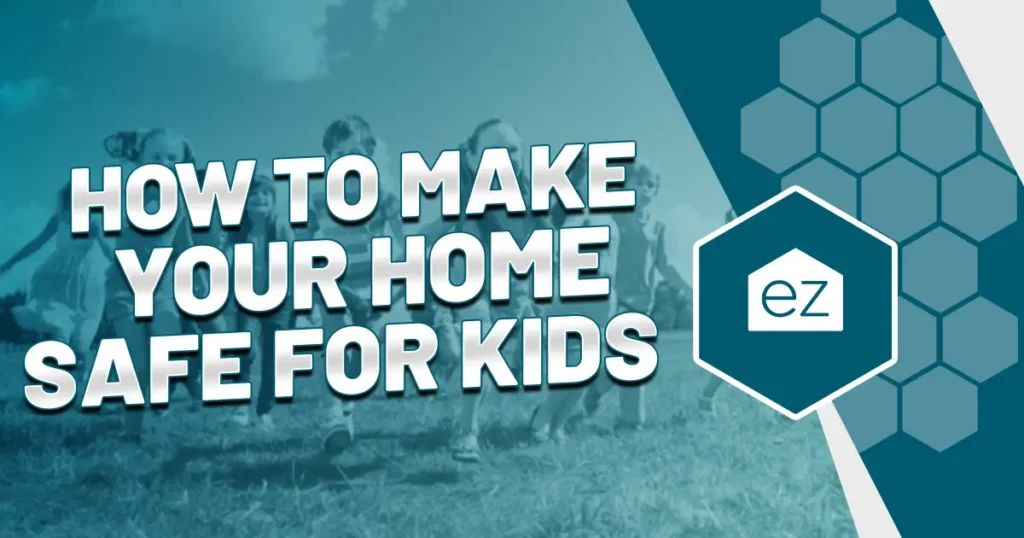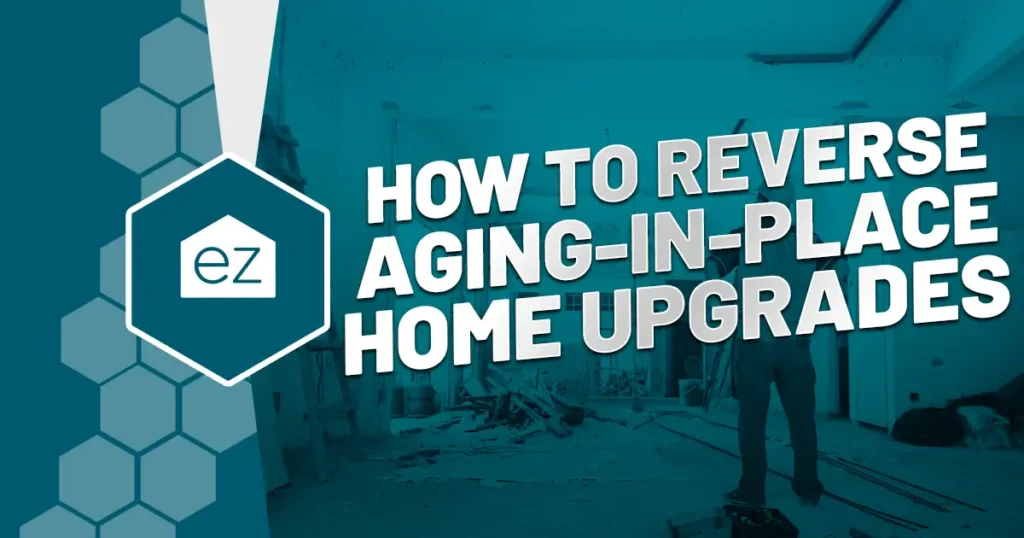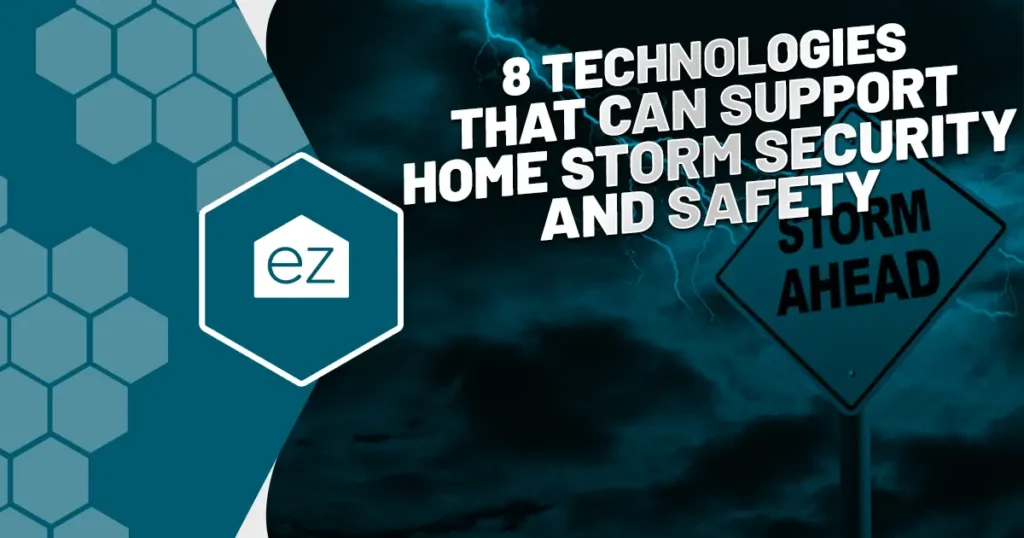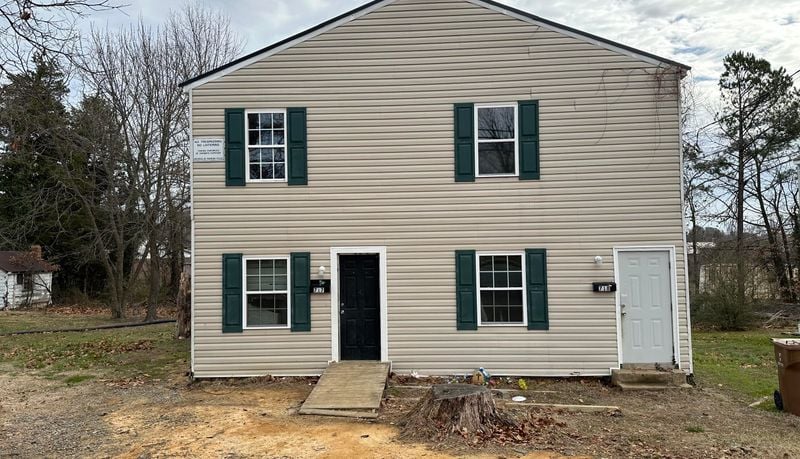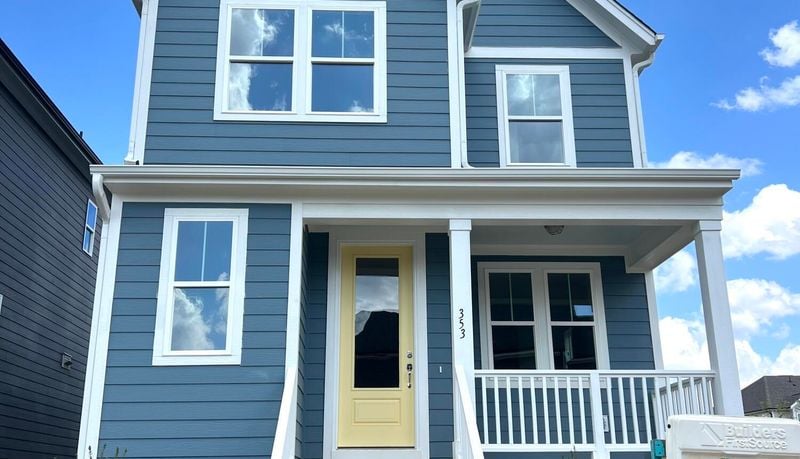Innovators Building Stronger Homes For Climate Change
Extreme weather events cost the US $81 billion in property losses and damages during 2023. Among them was Tropical Storm Hilary, the first tropical storm to hit southern California in over eight decades, dropping record-breaking rainfall. On the East Coast, Hurricane Idalia caused $3.6 billion in damage in hurricane-prone Florida despite coming ashore in a more rural part of the state.
The southeast, Gulf Coast, and Mid-Atlantic are more susceptible to hurricanes, but severe storms can occur anywhere. For homeowners, building strong homes to withstand extreme storms is not just a matter of property protection; it is about safeguarding the lives and well-being of their loved ones. Recognizing these storms’ inherent risks, companies are bringing advanced solutions to the market for building stronger homes that protect families in these life-threatening events. Thanks to these new and emerging technologies, making a home more storm-ready is an increasingly achievable goal.

Increasing Storm Threats
The frequency of unexpected severe weather events has escalated worldwide due to climate change. Homeowners in storm-prone eastern US are all too familiar with the annual hurricane season, and studies have proven that storms are getting stronger faster. These unpredictable conditions underscore the importance of construction resilience. Enhancing home safety and preventing storm damage is not just for those in known hurricane paths but is a prudent step for all homeowners in this era of changing climate patterns. Consider that in June 2023, “severe storms produced over 1,000 reports of weather-related damage across Oklahoma, Texas, Mississippi, Georgia, Florida, Arkansas, and Ohio,” according to NOAA.
Severe storms devastate communities. High-speed winds rip off roofs, cause debris to become airborne, and shatter windows. Heavy downpours overflow rivers and streams, causing significant flooding. Moreover, the constant battering of wind and water over the hours can weaken a home’s structural integrity. Add to that days of power loss in high-humidity environments, and you have a serious post-storm risk of illness from mold growth and contaminated food and water.
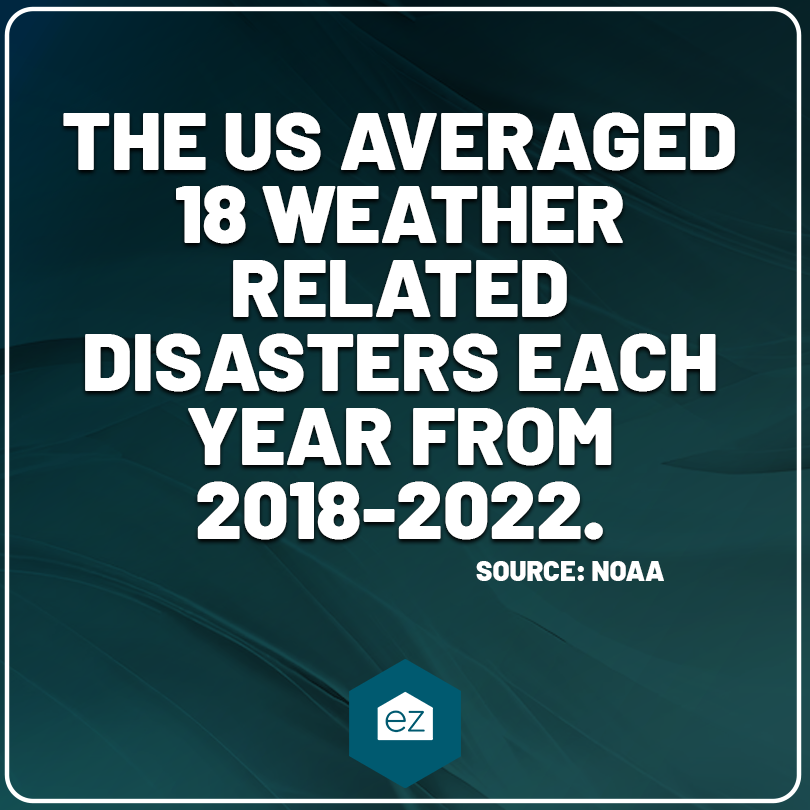
With these health threats in mind, preventing storm damage becomes a matter of utmost importance. That’s why Artificial Intelligence (AI) is getting into the field; scientists are using its computing power to better predict potential storm damage and wind maps based on weather forecasts and historical data.
Advancements in technology and construction offer promising solutions to bolster home integrity during storms. As we push the boundaries of innovation, leveraging these cutting-edge technologies is the key to making and building homes that can take Mother Nature’s pounding.
Retrofitting Homes To Withstand Stronger Storms
Completely rebuilding existing structures isn’t feasible by any stretch of the imagination. We can’t tear down and rebuild new homes just because our understanding of structural integrity has changed.
That’s where retrofitting homes with hurricane-resistant structures comes in. This is more cost-effective and efficient than rebuilding a house from scratch. Florida has an entire Hurricane Retrofit Guide to help homeowners upgrade their homes to withstand stronger storms.
Roofing Upgrades
Gable end walls are key weak points in roofing. One retrofit reinforces these gable end walls to withstand higher wind forces. Adding the additional wood braces and roof tie-down clips helps buffer the wind load. Tie-downs are thin metal straps designed to resist high-speed winds and work by securing the roof of a house firmly to its walls. This greatly reduces the risk of the roof being ripped off during a severe storm.
If you’re remodeling a wood frame home to the point where you get to remove the drywall, check the wall load paths and roof-to-wall connections. Older homes may lack hurricane straps, which are designed to transfer the load and resist the uplift caused by higher winds. It’s easier to retrofit these after removing drywall or insulation, so a to-the-stud remodel is a great time to check this upgrade.
Reinforced Entry Points
Homeowners have other options besides ripping down drywall. Upgrading existing windows to high-impact glass windows has proven an excellent defense against storm damage. Unlike ordinary glass, high-impact glass does not shatter upon impact with flying debris. This ensures the house’s interior remains protected from wind and rain even if debris strikes the home. As an added bonus, high-impact windows often include energy efficiency properties.
Garage doors are another retrofitting option. According to Florida Disaster, if the garage door fails, the chances of further damage to the home go up. Without the garage’s structural integrity, it can increase the home’s internal pressure, leading to structural failure. Reinforced garage doors resist buckling and bowing in high winds, minimizing this risk.
Storm panels have long been used for protection against storm damage, but the newest ones are made with advanced materials such as polycarbonate or aluminum. The materials provide superior strength and durability while adapting to the homeowner’s needs. Custom-built roll-down shutters deploy with the touch of a button–no pre-storm and post-storm installation necessary. These panels shield windows and doors from the destructive forces of high-speed winds and flying debris.
Spray Foam
Spray foam insulation is a versatile material with several benefits, mostly touted in the commercials for its insulating properties. Another is its ability to protect against water damage in roof loss or other structural issues. Closed-cell spray foam, in particular, has excellent water resistance. The compact cells do not allow water to pass through easily.
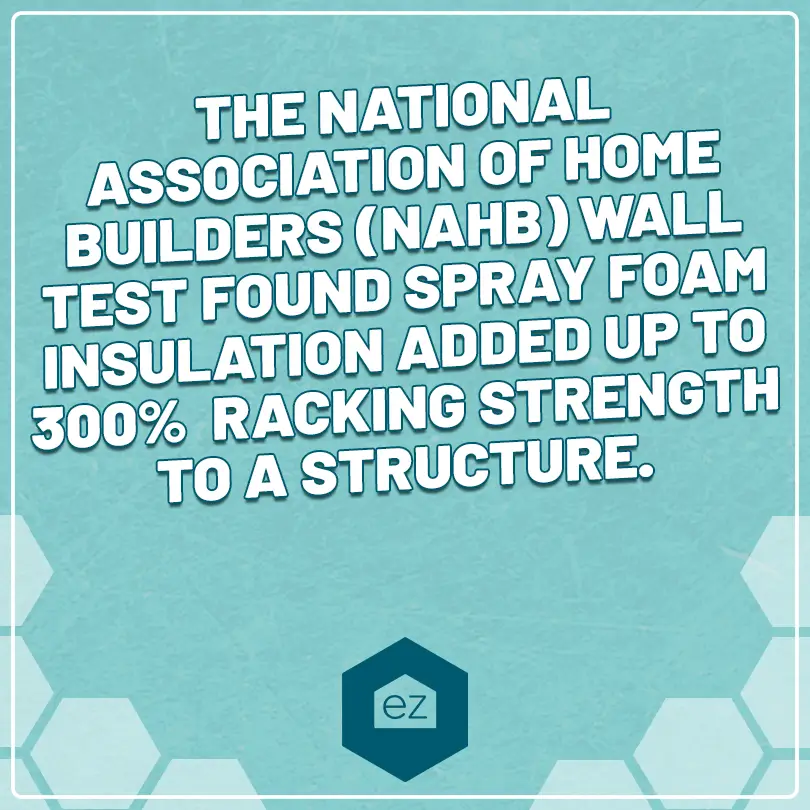
Spray foam’s adhesive properties help bond roofing materials together, strengthening overall structural integrity. This can be beneficial in preventing water from seeping through potential weak points in the roofing structure.
It’s not intended to be the end-all measure if you do end up with some roof damage, but it can prevent that damage from worsening until you can shore up your roof and walls.
More Composite Materials
Concrete slab and wood framing is a common construction method because it’s inexpensive and easily replaceable. But it’s also weak when it comes to withstanding extreme storm events.
Concrete isn’t a foolproof solution, but it does offer more hurricane wind protection. In some cases, insulated concrete forms (ICFs) withstand winds up to 250 mph. These are pre-cast concrete forms, like concrete walls or roofing panels. As proof it can work, one of the few homes left standing in Mexico Beach after Hurricane Michael roared ashore was constructed from reinforced concrete.
Its strength, wind, and water resistance factors into why concrete block construction homes took off in Florida. By 1995, about 50% of its residential housing was concrete block. But concrete block construction can fail, especially in those built before the 1960s. ICON Build skips over using concrete block for a newer technology: concrete printing. They literally 3D print homes out of concrete. It’s printed homes in Texas, Puerto Rico, and Mexico, where the homes stood through a 7.4 magnitude earthquake.
The innovators are thinking beyond concrete, as it’s not the most environmentally friendly form of construction. Firms like JD Composites are experimenting with reusable materials as a cost-effective and hardy construction solution. Their factory uses polyethylene terephthalate (PET) from recycled plastic bottles to build structurally insulated panels. In testing, the panels withstood wind forces twice that of a category 5 hurricane.
Building Round
Studies in wind tunnels and hurricane centers have shown that round shapes win out when weathering the storm’s high winds. They’re used by the ICON builder mentioned before, along with other environmentally-minded builders like Deltec Homes. Having built over 1,400 round homes from Florida to the Carolinas, it pairs round-home designs emphasizing critical truss connections. To date, its homes have escaped with minimal damage from major hurricanes, including Hurricane Ian in 2022.
Smart Community Design
Part of building stronger homes is looking at the whole community. Babcock Ranch in Florida has been held up as an example of a “hurricane-proof” community. When Category 4 Hurricane Ian made landfall nearby, its claims were put to the test. The hurricane’s pounding storm surge and winds washed away the bridges connecting the mainland to Sanibel Island and collapsed whole homes. Babcock Ranch residents lost a traffic light at the main entrance and a few street signs.
What did the master-planned community do differently? Developers’ changes included raising its ground level to build homes well above sea level. The streets absorb the floodwaters while surrounding retaining ponds protect them from flooding. They thoughtfully designed water runoff and preserved wetlands to accommodate severe storm flooding.
The region’s outgrid took weeks to repair, but residents never lost power. Its powerlines are buried underground so high winds don’t knock them down. A solar power farm sits on the outskirts and provides enough juice to run the whole neighborhood on solar power.
Changing Home Heights
Flooding is a very real threat, and not just from hurricanes. King tides, excessive rainfall, and other major storms increase the flood risk in new and existing places. Besides rebuilding on higher ground, one new solution proposes jacking buildings off the ground as needed.
High Tide Home Systems installs jackable steel grid platforms that lift homes from eight to 14 feet in the air. It uses a steel bream support frame to lift the home’s foundation and keep it balanced while doing so. It is engineered to withstand high wind speeds and accommodate flood depths.
This innovative technology is very cutting-edge and requires building a home from scratch. An alternative is to raise the foundation of an existing home structure permanently. It can be done through a system of steel beams, hydraulic jacks, and careful engineering–FEMA even has a booklet about elevating existing homes. The precise techniques vary based on the local flood level, the home’s construction, structural integrity, and weight.
Another innovation in home heights is to use fiberglass instead of concrete. As we learned with a tragic loss of life with the Sunrise condo collapse, concrete is susceptible to cracking and crumbling due to saltwater intrusion. It’s causing Florida to re-examine high-rise coastal structures. Fiberglass pilings withstand salt water without risk of corrosion or rot and are actually stronger while serving as an environmentally friendly alternative.
Future Developments in Home Construction Technology
The future holds immense promise for making our homes more durable in high-impact weather events. With climate change worsening, that’s a good thing. Ongoing research and innovation lead to us building stronger homes that withstand the winds and water from these storms. For homeowners, these new homes increase peace of mind while keeping them closer to the communities they want to live in.
Start Your Home Search
Preston Guyton
Share this Post
Related Articles
Home Safety
How to Make Your Home Safe For Kids
Home Safety
Flood Zones: What You Need to Know
Home Safety
